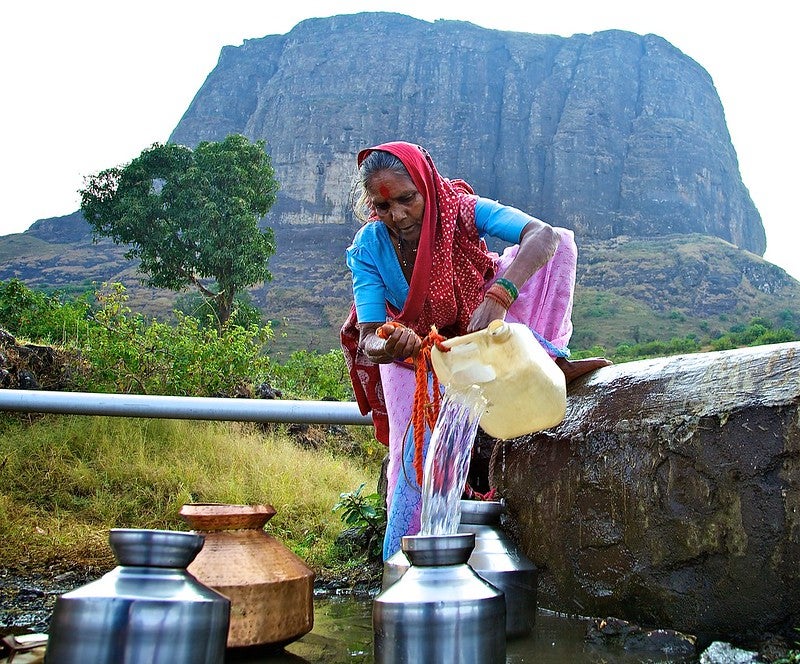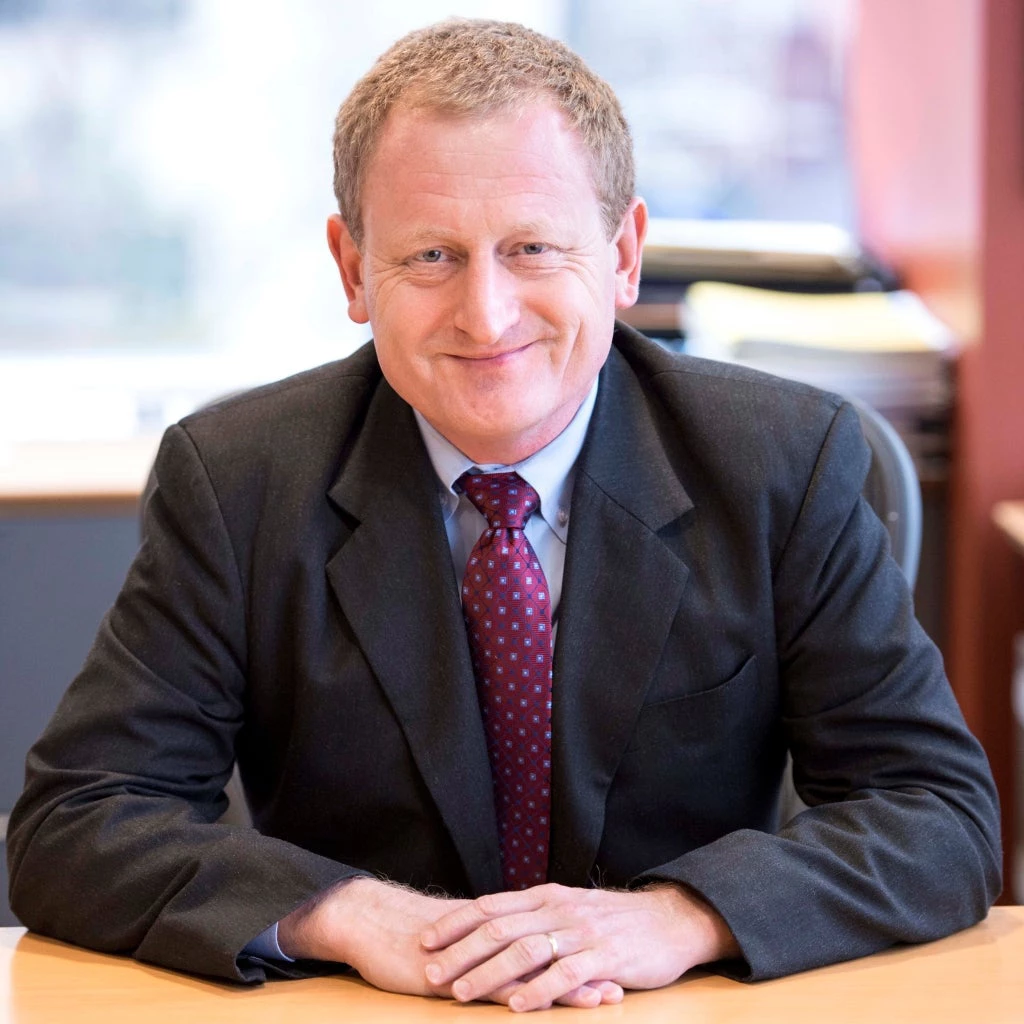 Picture of a farmer pumping water from a tubewell
Picture of a farmer pumping water from a tubewell
India is the largest user of groundwater globally, extracting more than the United States and China put together. Today, groundwater is the only source of water for most of India’s people, providing the bulk of water for farming and domestic use.
While groundwater spurred the Green Revolution that made India a food-secure nation, the widespread extraction of this precious resource has led to its alarming decline. With climate change making rainfall patterns increasingly unpredictable, groundwater will assume even more importance.
Already, almost two-thirds - 63 percent - of India’s districts are threatened by falling groundwater levels. In many cases, this water is becoming contaminated. Worryingly, poverty rates are 9-10 percent higher in districts where groundwater tables have fallen below 8 meters, leaving small farmers particularly vulnerable. If current trends persist, at least 25 percent of India’s agriculture will be at risk.
In 2019, the Government of India launched its landmark groundwater program, the Atal Bhujal Yojna, to arrest this precipitous decline. Since groundwater conservation lies in the hands of hundreds of millions of people, the program placed communities at the heart of the effort, marrying scientific inputs with traditional wisdom to address this complex challenge.
In 2020, the World Bank began support for the government’s program in over 9,000 water-scarce gram panchayats (village councils) in seven Indian states - from Haryana and Uttar Pradesh in the north, to Rajasthan, Gujarat and Maharashtra in the west, to Madhya Pradesh in central India and Karnataka in the south.
These states account for about 25 percent of the area where groundwater is under stress - that is, where annual extraction is more than the annual natural recharge or is exhibiting a trend that it will soon be so. The area covers different hydrogeologic systems that include both the deep alluvial aquifers of the Indo‐Gangetic plain as well as the shallow, hard rock aquifers of peninsular India.
Two years into the project, the experience has been both rewarding and challenging - rewarding to see how communities have understood the urgent need for groundwater management. But challenging to find practical solutions as to how this is to be done at scale.
For instance, how do you enlist community support for a resource that is not visible? How do you maintain long-term commitment when the results will not be seen for years to come? How do you consolidate and replenish a resource that does not conform to administrative boundaries? How do you institutionalize conservation practices, especially when the geographic, social and environmental conditions are so diverse across this vast country?
Given the massive scale of the exercise, the project engaged teams of multi-specialty experts at the national, state, and district levels. Context specific communication campaigns were rolled out, targeting farmers, citizen leaders, school children, youth, and women’s self-help groups, among others.
Although the pace of the project was impacted by the pandemic, independent evaluations show that awareness is increasing and communities have begun to monitor groundwater levels in more than 6,000 observation wells.
Over 2,200 villages have drawn up water budgets that show how much groundwater is available, how much is estimated to be recharged, and how much can be set aside for agriculture, by far the largest user of this resource. The plans also focus on getting farmers to adopt high efficiency irrigation practices and broach the more complex issue of getting them to switch to less water-intensive crops.
In Gujarat, for instance, farmers are beginning to understand the need to move away from water-guzzling crops such as cotton and wheat to pomegranates and cumin, which not only use less water but also fetch good prices. The World Bank is now undertaking a study and preparing plans to support these farmers through the development of value chains that source quality inputs and improve crop management. Most importantly, the plans propose to link farmers to better market opportunities through collective marketing, and support the primary processing of produce by grading and packing.
In Haryana, on the other hand, the state government’s ‘Mera Pani, Meri Virasat’ program - My Water, My Heritage - is incentivizing farmers to replace water-guzzling paddy with maize, millets or pulses.
The Government of India is now using its flagship groundwater program – the Atal Bhujal Yojana - as the platform around which other national and state level programs are anchored. For example, it is leveraging the MNREGA program and the watershed development component of PMKSY to help farmers build water harvesting structures, and get ‘more crop per drop’ by adopting high-efficiency irrigation systems.
Nonetheless, the path ahead will not be easy. The critical challenge will lie in getting farmers to alter their cropping patters to suit the water available in each season, and for the government to use economic instruments to manage this crisis.
Even so, our efforts persist as we learn, un-learn, re-learn, and reflect about the most appropriate solutions for each region.
This work was funded in part by the Global Water Security & Sanitation Partnership, a Multi-Donor Trust Fund based at the World Bank’s Water Global Practice.




Join the Conversation